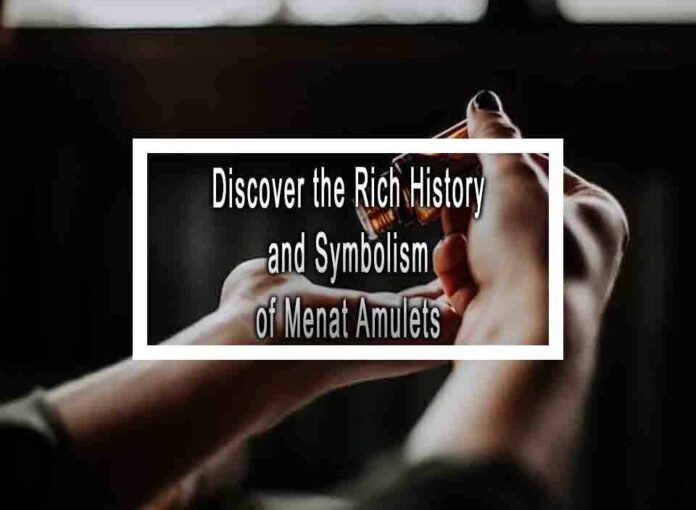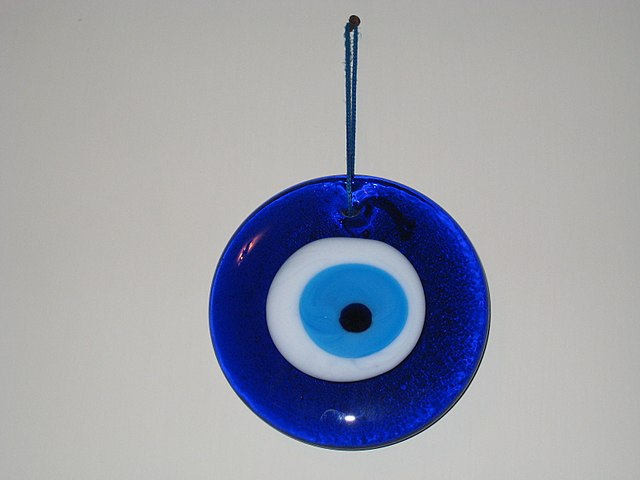Menat amulets hold a rich history and symbolism in ancient Egyptian culture. These amulets were worn by both gods and individuals and were believed to have protective and nurturing properties. Here’s an exploration of the history and symbolism of Menat amulets:
1. Physical Description:
- Form: Menat amulets typically consist of a beaded necklace with a counterpoise pendant. The necklace was often made of a series of small, colorful beads, while the pendant was a flat, elongated, and decorative piece.

2. Cultural Significance:
- Protection and Fertility: Menat amulets were associated with the goddess Hathor, who was a deity of love, music, dance, fertility, and motherhood. The amulets were believed to have protective and nurturing qualities, offering both physical and spiritual well-being.
3. Role in Rituals and Ceremonies:
- Ritualistic Use: Menat amulets were used in various religious and ritualistic contexts. They were often employed in dances, music, and offerings to invoke the blessings and protection of Hathor.
4. Connection to Hathor:
- Symbol of Hathor: The Menat necklace itself was considered a symbol of Hathor. Hathor was often depicted wearing a Menat necklace as a sign of her divine authority and protective role.
- Goddess of Joy: Hathor was also known as the “Lady of the Sycamore” and the “Lady of Heaven.” She was associated with joy, music, dance, and festivities, making her a beloved deity in ancient Egypt.
5. Ritual Dances and Performances:
- Dance of the Priestesses: In ancient Egypt, priestesses of Hathor would often perform the “Menat Dance” during religious ceremonies. This dance involved shaking the Menat necklace, creating a rhythmic sound that was believed to invoke the goddess’s presence.
6. Personal Amulets:
- Individual Use: Menat amulets were not exclusively for use in temples or religious rituals. Individuals also wore them as personal amulets to seek Hathor’s protection and blessings in their daily lives.
7. Symbol of Motherhood and Fertility:
- Fertility Symbol: Due to Hathor’s association with fertility and motherhood, Menat amulets were often given to women to wear during pregnancy and childbirth, as they were believed to promote a safe and healthy delivery.
8. Modern Interpretation:
- Collectible and Decorative: Menat amulets are now collected as historical artifacts and are sometimes worn as decorative jewelry pieces, often with an appreciation for their historical and cultural significance.
In summary, Menat amulets are ancient Egyptian artifacts that symbolize the protective and nurturing qualities of Hathor, the goddess of love, music, dance, fertility, and motherhood. They were used in religious rituals, dances, and ceremonies to invoke Hathor’s blessings and were also worn by individuals for personal protection and well-being. These amulets continue to be valued for their historical and cultural significance today.











